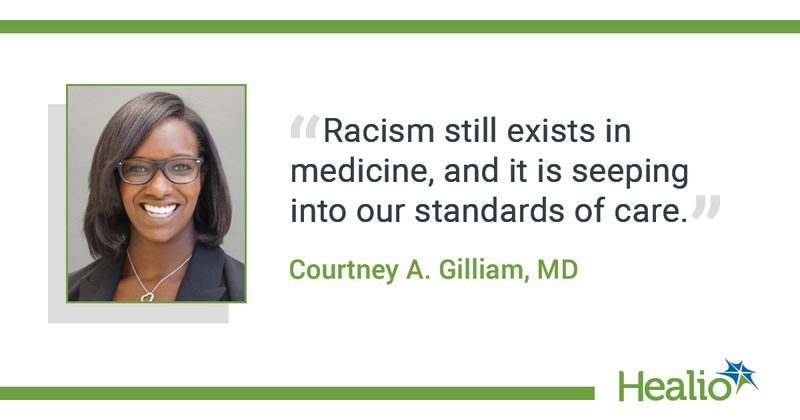Race unexplored in most pediatric clinical care guidelines, review finds
Race and ethnicity were unexplored in most American pediatric clinical practice guidelines published in the last 5 years, according to the results of a systematic review published in JAMA Pediatrics.
Courtney A. Gilliam, MD, a member of the division of hospital medicine in the department of pediatrics at Seattle Children’s Hospital and a co-author of the review, said in a Healio interview that the use of race in clinical practice guidelines has the potential to positively or negatively affect structural racism and health inequities.

“We knew that medicine has a very long history of applying blame to the biology and genetics of race, and we wanted to look at the guidelines to see if racism is seeping through into our gold standard,” Gilliam said. “Additionally, we really wanted to look at how [to] shift the focus to talk about racism as the reason for observed differences, not race.”
Gilliam and colleagues reviewed English-language guidelines for patients aged younger than 19 years that were published from Jan. 1, 2016, to April 30, 2021, and included race or ethnicity terms. They used a critical race theory framework to classify each use according to its potential to either “positively or negatively affect structural racism and racial inequities in health care,” according to the text.
Of the 414 sets of pediatric clinical practice guidelines found by the researchers, 126 (30%) met criteria for full review based on the use of race or ethnicity terms.
The researchers also found that when race or ethnicity was mentioned, 57% of the time it was used in a way that could exacerbate or have a negative impact on inequities, and only 15.1% of clinical practice guidelines include language specifically intended to address disparities in medicine.
In all, 70% of the guidelines did not mention race or ethnicity at all.
“I think that shows a missed opportunity for us as medical organizations to be proactive in talking about health care inequities and systemic racism in our field,” Gilliam said. “We have a long way to go in interrogating clinical practice guidelines.”
What needs to come next, Gilliam said, includes a shift in the language of these reviews and a move away from using race as a variable “between the difference in health outcomes and looking at the systemic factors we have to overcome.”
“We [also] need to take a look at who is on the committees when we’re building these guidelines,” Gilliam said. “We should be taking a look to see if we have representation from all parties. Are we thinking with a lens of equity? Are we taking into account social determinants of health?”
Gilliam said she hoped the review would “help people think about how we can interrogate the systems at play.”
“Racism still exists in medicine, and it is seeping into our standards of care,” Gilliam said. “We need to think about why we’re communicating it this way and start breaking down that barrier.”

